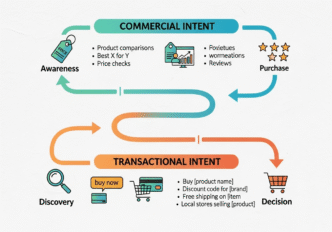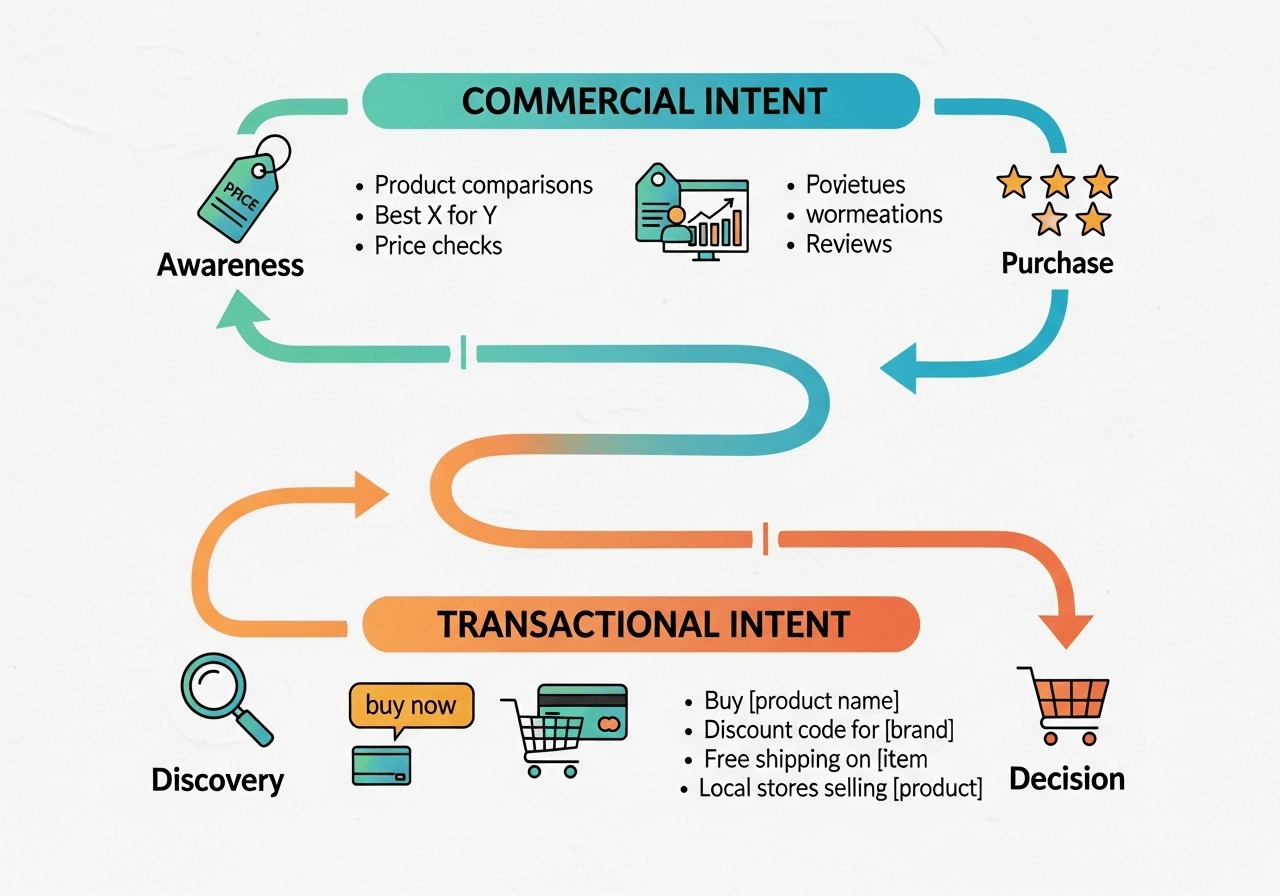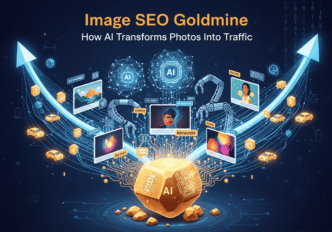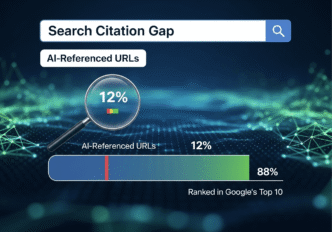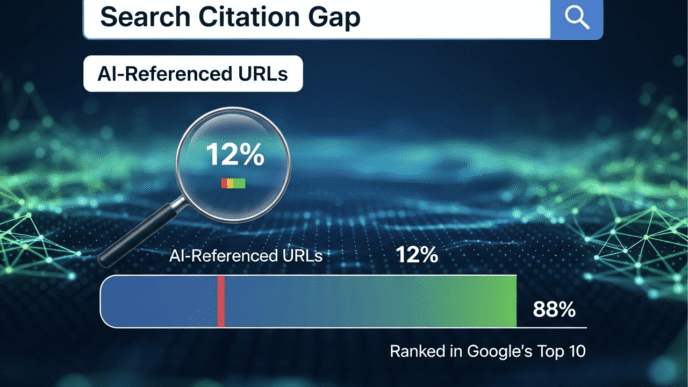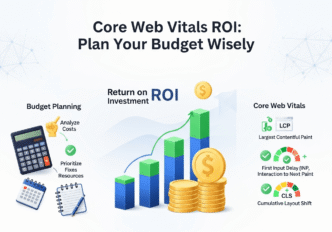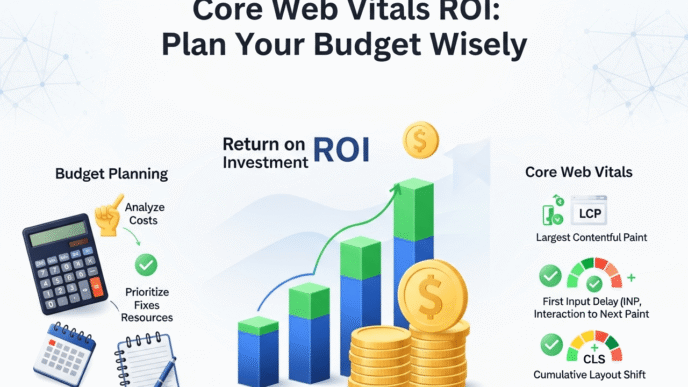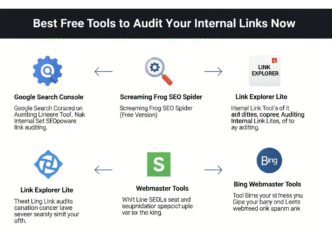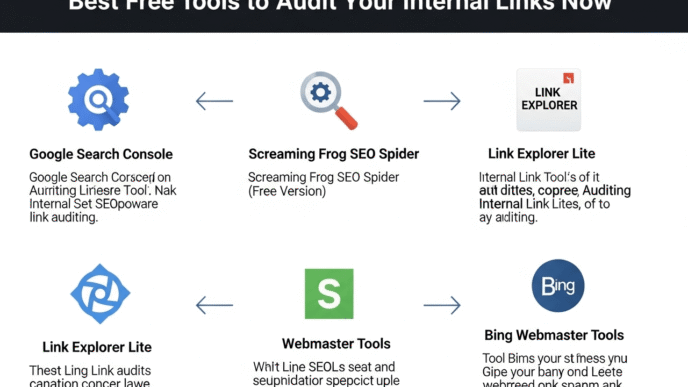Ever wonder why some of your content gets tons of traffic but zero sales, while other pages convert like crazy with fewer visitors? The secret lies in understanding commercial vs transactional intent – the difference between window shopping and walking into a store with your wallet out.
Here’s the plot twist: Most marketers create content for the wrong stage of the buyer’s journey. They either target researchers with “buy now” pages or hit ready-to-purchase customers with comparison articles. It’s like offering a detailed menu to someone who just wants to pay and leave.
Understanding the difference between commercial and transactional search intent isn’t just SEO theory – it’s the roadmap to creating content that captures prospects at exactly the right moment and guides them toward purchase decisions.
Ready to decode the psychology behind buyer intent keywords and transform your content strategy from traffic generator to revenue driver? Let’s dive in.
Table of Contents
Toggle
What’s the Real Difference Between Commercial and Transactional Search Intent?
Commercial vs transactional intent represents two distinct phases in the buying journey stages – the difference between “help me choose” and “help me buy.”
Commercial intent is the research phase where users are:
- Comparing options and alternatives
- Reading reviews and gathering information
- Evaluating features and benefits
- Building confidence for purchase decisions
Transactional intent is the action phase where users are:
- Ready to make immediate purchases
- Looking for specific products or services
- Seeking the fastest path to completion
- Focused on logistics rather than persuasion
Think of commercial intent as dating – you’re exploring options, asking questions, and getting to know possibilities. Transactional intent is proposing – you’ve made your decision and want to move forward immediately.
The Psychology Behind Purchase Intent Searches
Commercial search queries reveal users building purchase confidence:
- “Best project management software 2025”
- “HubSpot vs Salesforce comparison”
- “iPhone 15 Pro review”
- “Affordable email marketing tools”
Transactional keywords show users ready for immediate action:
- “Buy iPhone 15 Pro online”
- “HubSpot pricing plans”
- “Sign up for Mailchimp”
- “Download Photoshop trial”
Pro Tip: Users don’t always follow linear paths. Someone might search commercial terms multiple times before reaching transactional intent, or jump straight to transactional searches for familiar products.
How Do Buyer Behavior Patterns Differ Between Commercial and Transactional Searches?
Buyer behavior patterns reveal fascinating differences in how users approach commercial keywords versus transactional keywords. Understanding these patterns helps you create content that matches user expectations perfectly.
Commercial Intent User Behavior
Research-focused activities:
- Multiple site visits before deciding
- Extensive content consumption (3-5 pieces average)
- Social proof seeking (reviews, testimonials)
- Price and feature comparison
- Risk mitigation research
Time investment patterns:
- Longer session durations (average 4-7 minutes)
- Higher page views per session
- Repeat visits over days or weeks
- Social sharing and bookmarking behavior
Transactional Intent User Behavior
Action-focused activities:
- Single-session purchase decisions
- Minimal additional research needs
- Quick navigation to purchase/signup flows
- Price and logistics focus
- Immediate conversion seeking
Efficiency-driven patterns:
- Shorter session durations (average 1-3 minutes)
- Direct navigation to target pages
- Mobile-heavy usage patterns
- Immediate bounce if barriers exist
| Behavior Aspect | Commercial Intent | Transactional Intent |
|---|---|---|
| Session Duration | 4-7 minutes | 1-3 minutes |
| Pages per Session | 5-8 pages | 1-3 pages |
| Research Time | Days to weeks | Minutes to hours |
| Content Preference | Detailed comparisons | Quick specifications |
| Decision Factors | Features, reviews, value | Price, availability, ease |
Real Example: An e-commerce electronics store found that users searching “best wireless headphones” (commercial) visited an average of 6 pages and returned 3 times before purchasing. Users searching “buy Sony WH-1000XM4” (transactional) visited 2 pages and converted immediately 73% of the time.
What Are the Key Commercial Intent vs Transactional Intent Examples?
Commercial intent vs transactional intent examples help you recognize these patterns in your own keyword research and content planning. The language patterns reveal user mindset clearly.
Commercial Intent Signal Words and Phrases
Comparison terms:
- “Best,” “top,” “leading,” “recommended”
- “Vs,” “versus,” “compared to,” “alternatives”
- “Review,” “pros and cons,” “advantages”
- “Which,” “should I,” “better option”
Research-focused queries:
- “Features of [product]”
- “Benefits of [service]”
- “How [product] works”
- “Is [product] worth it”
Transactional Intent Signal Words and Phrases
Action-oriented terms:
- “Buy,” “purchase,” “order,” “get”
- “Download,” “install,” “signup,” “subscribe”
- “Price,” “cost,” “pricing,” “plans”
- “Near me,” “location,” “store hours”
Immediate need indicators:
- “Free trial,” “demo,” “consultation”
- “Same day delivery,” “instant access”
- “Available now,” “in stock”
- “Contact,” “call,” “schedule”
Industry-Specific Examples
| Industry | Commercial Intent Example | Transactional Intent Example |
|---|---|---|
| Software | “Best CRM software for small business” | “Buy Salesforce professional plan” |
| E-commerce | “Wireless headphones review 2025” | “Order AirPods Pro Max online” |
| Services | “Digital marketing agency comparison” | “Hire SEO consultant now” |
| Education | “Online coding bootcamps vs degrees” | “Enroll in Codecademy Pro” |
Seasonal and Contextual Variations
Holiday shopping patterns:
- Commercial: “Best gifts for tech lovers”
- Transactional: “Buy iPhone 15 Black Friday deals”
Business purchase cycles:
- Commercial: “Enterprise software security comparison”
- Transactional: “Contact Microsoft sales team”
Emergency situations:
- Commercial: “Emergency plumber reviews”
- Transactional: “24/7 plumber near me call now”
Pro Tip: Monitor your own search behavior for a week. Notice how you research before big purchases (commercial) versus how you search when you need something immediately (transactional). This personal insight improves your content strategy.
How to Target Commercial and Transactional Keywords Effectively?
How to target commercial and transactional keywords requires different content strategies, user experience approaches, and conversion optimization techniques. One size definitely doesn’t fit all.
Commercial Keyword Targeting Strategy
Content format optimization:
- In-depth comparison articles (2,500+ words)
- Comprehensive reviews with pros and cons
- Buyer’s guides with decision frameworks
- Feature comparison tables and charts
SEO optimization focus:
- Featured snippet targeting for comparison queries
- Long-tail keyword clusters around main topics
- Internal linking between related comparisons
- Authority building through expert insights
Trust-building elements:
- Author credentials and expertise demonstration
- Social proof through user reviews and testimonials
- Industry awards and recognition mentions
- Detailed methodology explanations
Transactional Keyword Targeting Strategy
Content optimization priorities:
- Clear value propositions above the fold
- Streamlined navigation to purchase/signup
- Trust signals like security badges and guarantees
- Minimal friction in conversion processes
Technical SEO focus:
- Page speed optimization (under 2 seconds)
- Mobile-first design for on-the-go purchases
- Local SEO optimization for “near me” searches
- Schema markup for rich results
Conversion optimization elements:
- Prominent calls-to-action with action words
- Limited options to prevent decision paralysis
- Urgency indicators like stock levels or time limits
- Multiple payment options for user convenience
| Optimization Aspect | Commercial Pages | Transactional Pages |
|---|---|---|
| Content Length | 2,000-4,000 words | 500-1,500 words |
| Primary Goal | Education and comparison | Conversion and action |
| Key Metrics | Time on page, social shares | Conversion rate, revenue |
| User Journey | Research and consideration | Decision and purchase |
Case Study: A SaaS company split-tested their keyword strategy. Their commercial content (“best project management tools”) generated 847 email subscribers but only 23 trial signups. Their transactional content (“free project management trial”) generated 156 email subscribers but 289 trial signups – a 12x better conversion rate.
What Does Buyer Journey Search Intent Optimization Look Like?
Buyer journey search intent optimization means creating content ecosystems that guide users from awareness through purchase. It’s about building bridges between commercial and transactional intent.
The Complete Buyer Journey Content Map
Awareness Stage (Informational Intent):
- Problem identification content
- Educational guides and tutorials
- Industry insights and trends
- “How to” and “What is” content
Consideration Stage (Commercial Intent):
- Product/service comparisons
- Detailed reviews and case studies
- Buyer’s guides and checklists
- Feature benefit explanations
Decision Stage (Transactional Intent):
- Pricing and plan comparisons
- Free trials and demonstrations
- Contact forms and consultation offers
- Purchase pages and checkout flows
Strategic Content Linking
Progressive disclosure strategy:
- Informational content links to commercial comparisons
- Commercial content links to transactional pages
- Transactional pages offer related products/services
- Post-purchase content encourages loyalty and referrals
Internal linking framework:
- Use commercial keywords as anchor text linking to comparison content
- Include transactional keywords when linking to purchase pages
- Create topic clusters around buyer intent keywords
- Build authority through comprehensive coverage
Multi-Intent Content Strategy
Hybrid content approaches:
- Commercial-focused articles with transactional CTAs
- Transactional pages with commercial comparison sections
- Landing page sequences progressing from research to purchase
- Email nurture sequences matching search intent evolution
Real Example: A marketing automation company created a content funnel targeting “email marketing automation” (commercial) that linked to “start free trial” pages (transactional). The commercial content attracted 50K monthly visitors, with 8% clicking through to trial pages and 23% of those converting to paid customers.
For comprehensive buyer journey optimization strategies, explore our detailed Search Intent Mastery Guide with advanced funnel frameworks.
How Do Purchase Decision Intent Patterns Vary by Industry?
Purchase decision intent manifests differently across industries, requiring tailored approaches to commercial vs transactional keyword strategy. Understanding these patterns helps you create more effective, industry-specific content.
B2B vs B2C Intent Differences
B2B commercial intent patterns:
- Longer research cycles (weeks to months)
- Multiple stakeholder involvement
- Risk mitigation focus
- ROI and business case emphasis
B2C commercial intent patterns:
- Shorter research cycles (hours to days)
- Individual decision making
- Emotional and practical benefits focus
- Price and convenience emphasis
Industry-Specific Intent Behaviors
Technology/Software:
- Commercial: Feature comparisons, integration capabilities, security reviews
- Transactional: Free trials, demo requests, implementation consultations
Healthcare/Medical:
- Commercial: Treatment option research, provider comparisons, insurance coverage
- Transactional: Appointment booking, procedure scheduling, insurance verification
Financial Services:
- Commercial: Rate comparisons, provider reviews, terms analysis
- Transactional: Application submissions, account opening, loan approvals
E-commerce/Retail:
- Commercial: Product reviews, price comparisons, brand research
- Transactional: Purchase completion, shipping options, payment processing
| Industry | Research Duration | Decision Factors | Primary Concerns |
|---|---|---|---|
| Enterprise Software | 3-12 months | ROI, integration, support | Implementation risk |
| Consumer Electronics | 1-4 weeks | Features, price, reviews | Product reliability |
| Professional Services | 2-8 weeks | Expertise, results, cost | Service quality |
| E-commerce Products | 1-7 days | Price, shipping, returns | Transaction security |
Pro Tip: Study your actual customer journey data through Google Analytics. Look at the content consumption patterns of users who eventually convert versus those who don’t. This reveals your industry-specific intent progression patterns.
What Are the Most Effective Commercial vs Transactional Keyword Strategies?
Commercial vs transactional keyword strategy requires different approaches to content creation, optimization, and conversion. Here are proven frameworks for both intent types.
Advanced Commercial Keyword Strategies
Content cluster development:
- Main pillar: Comprehensive comparison guide
- Supporting content: Individual product/service reviews
- Related topics: Industry trend analysis
- User-generated content: Customer testimonials and case studies
SERP feature optimization:
- Featured snippets for “best” and “top” queries
- People Also Ask expansion for related questions
- Image optimization for visual comparisons
- Video content for demonstration and explanation
Advanced Transactional Keyword Strategies
Conversion funnel optimization:
- Landing page variants for different transactional terms
- A/B testing for CTA placement and messaging
- Progressive disclosure reducing cognitive load
- Exit-intent popups for cart abandonment recovery
Local and mobile optimization:
- “Near me” optimization for location-based services
- Mobile-first design for on-the-go purchases
- Voice search optimization for conversational queries
- Click-to-call functionality for immediate contact
Cross-Intent Strategy Integration
Content bridge creation:
- Commercial content with “ready to buy?” sections
- Transactional pages with “need more info?” links
- Email sequences progressing from education to offers
- Retargeting campaigns matching intent progression
Measurement and optimization:
- Commercial content metrics: Engagement, shares, link building
- Transactional content metrics: Conversion rate, revenue, ROI
- Cross-intent attribution: Multi-touch conversion tracking
- Intent progression analysis: User journey mapping
Case Study: An online course platform implemented dual-intent optimization. Their commercial content (“best online coding courses”) captured 75K monthly visitors and generated 3,200 email subscribers. Strategic CTAs guided 18% to transactional pages (“enroll in Python course”), resulting in 1,847 course enrollments and $425,000 additional revenue.
Common Mistakes in Commercial and Transactional Intent Targeting
Even experienced marketers make costly mistakes when handling buying journey stages. Here are the biggest traps and how to avoid them.
Commercial Intent Targeting Mistakes
Mistake #1: Premature Sales Push Problem: Adding aggressive CTAs to research-focused content Solution: Lead with value, end with soft next-step suggestions
Mistake #2: Shallow Comparison Content Problem: Surface-level comparisons that don’t help decision-making Solution: Deep, actionable comparisons with clear recommendations
Mistake #3: Biased Reviews Problem: Obviously promotional “reviews” that lack credibility Solution: Honest pros and cons with transparent disclosure
Transactional Intent Targeting Mistakes
Mistake #4: Information Overload Problem: Too much detail on pages designed for quick action Solution: Streamlined content focused on conversion essentials
Mistake #5: Hidden Costs or Complexity Problem: Unclear pricing or complicated signup processes Solution: Transparent, simple conversion paths
Mistake #6: Mobile Unfriendly Experience Problem: Desktop-optimized transactional pages Solution: Mobile-first design with touch-friendly elements
Universal Intent Targeting Mistakes
Mistake #7: Single-Intent Content Problem: Creating content that serves only one intent type Solution: Strategic progression paths between intent stages
Mistake #8: Ignoring User Feedback Problem: Not adapting strategy based on actual user behavior Solution: Regular user research and content optimization
Pro Tip: Use heat mapping tools like Hotjar to understand how users interact with your commercial versus transactional content. The behavior patterns reveal optimization opportunities you’d never discover through analytics alone.
Advanced Buyer Intent Optimization Techniques
Ready to master buyer intent keywords at a professional level? These advanced techniques separate amateurs from experts.
Intent-Based Personalization
Dynamic content adaptation:
- First-time visitors see educational content
- Returning visitors see comparison-focused content
- High-engagement users see transactional offers
- Cart abandoners see urgency-focused messaging
Predictive Intent Modeling
Behavioral trigger identification:
- Page view sequences indicating intent progression
- Time on page thresholds revealing engagement levels
- Download behaviors showing information appetite
- Search pattern analysis predicting purchase timing
Multi-Channel Intent Integration
Cross-platform strategy alignment:
- Social media content supporting commercial intent research
- Email campaigns nurturing commercial to transactional progression
- Paid advertising targeting transactional keywords for ready buyers
- Content marketing building authority for commercial intent capture
For advanced intent optimization techniques and predictive modeling strategies, dive deeper into our comprehensive Buyer Journey Optimization Framework.
Your Commercial vs Transactional Intent Action Plan
Ready to optimize for both commercial and transactional keywords? Here’s your step-by-step implementation roadmap:
Week 1: Intent Audit and Analysis
- Categorize existing content by commercial vs transactional intent
- Analyze current keyword targets for intent alignment
- Study user journey data to identify progression patterns
- Map content gaps in both intent categories
Week 2: Commercial Intent Optimization
- Create comprehensive comparison content for top commercial keywords
- Develop buyer’s guides with decision frameworks
- Optimize existing content for featured snippets
- Add strategic internal links to transactional pages
Week 3: Transactional Intent Development
- Streamline high-value transactional pages
- A/B test CTA placement and messaging
- Optimize mobile experience for quick conversions
- Implement trust signals and security features
Week 4: Integration and Testing
- Connect commercial and transactional content strategically
- Set up intent-based tracking and measurement
- Launch cross-intent campaigns and monitor performance
- Gather user feedback on new content approach
For detailed implementation guides and professional-level strategies, explore our complete Commercial Intent Mastery Guide.
Frequently Asked Questions
Can one page target both commercial and transactional intent?
It’s possible but not usually optimal. Most successful pages focus primarily on one intent while acknowledging the other. For example, a comprehensive comparison (commercial) can include “ready to decide?” CTAs linking to transactional pages.
How do I know if my keyword is commercial or transactional?
Analyze the search results and language patterns. Commercial keywords typically show comparison articles and reviews in results. Transactional keywords show product pages, pricing pages, and “buy” focused content.
What’s the conversion rate difference between commercial and transactional content?
Transactional content typically converts 5-15x higher than commercial content, but commercial content often generates much more traffic. The key is using commercial content to feed qualified traffic to transactional pages.
Should I bid on commercial keywords in paid ads?
Yes, but with different strategies. Commercial keywords work well for brand awareness and retargeting campaigns. Transactional keywords are better for direct conversion campaigns with higher bids.
How long should commercial versus transactional content be?
Commercial content typically needs 2,000-4,000 words for comprehensive comparisons. Transactional content should be concise (500-1,500 words) and focused on conversion essentials.
Do commercial and transactional intent patterns change seasonally?
Absolutely! Holiday seasons increase transactional intent, while new year periods often show more commercial research intent. Monitor your industry patterns and adjust strategy accordingly.
Final Thoughts: Mastering the Buyer’s Journey Through Intent
Understanding commercial vs transactional intent isn’t just about keyword categorization – it’s about respecting where users are in their decision-making process and providing exactly what they need at each stage.
The most successful content strategies recognize that buyer behavior patterns are predictable but not uniform. Some users research extensively before buying, while others jump straight to purchase. Your job is serving both paths effectively.
Commercial intent content builds relationships, trust, and authority. Transactional intent content converts that trust into business results. Neither works optimally without the other – they’re two sides of the same conversion coin.
Your competitors are probably focusing on one intent type or trying to force both into single pages. You’ll be creating strategic ecosystems that guide users naturally from research to purchase, respecting their journey while accelerating their progress.
Remember: The goal isn’t just capturing traffic for commercial or transactional keywords – it’s creating seamless pathways that turn researchers into customers and customers into advocates.
Start by understanding your own customer journey. Map the progression from first search to final purchase. Then create content that makes each step easier, faster, and more confident.
Your future customers are searching right now. Make sure you’re ready to meet them exactly where they are.
Ready to master advanced buyer journey optimization? Explore our complete Commercial and Transactional Intent Strategy Framework for professional-level techniques that drive both traffic and revenue.

